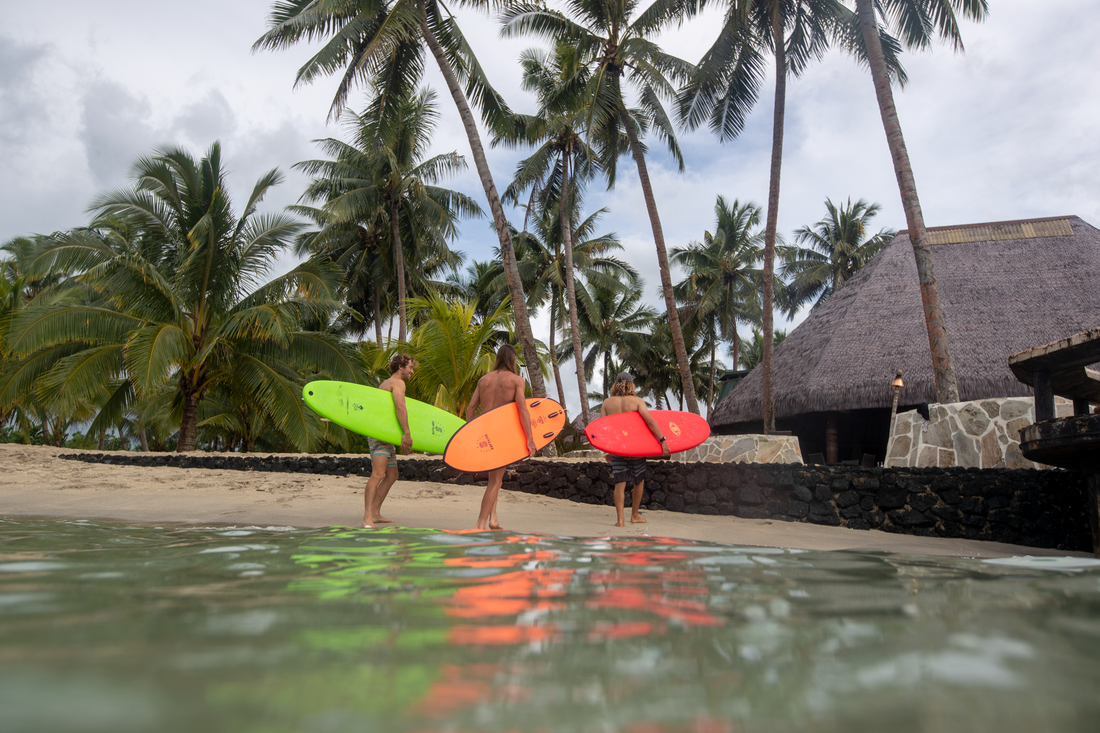
The Surfing World Has Gone SOFT!
Share
By Maryanne Parkinson
Once mocked, now mobbed. The softboard revolution has begun.

Long before foam and fiberglass, Polynesians danced across powerful tropical waves on hand-carved alaiawooden, finless boards that moved like extensions of the body. Since then, surf craft has diversified, evolved, and multiplied. Taking on new constructions, shapes, sizes, and styles for every wave type imaginable.
The original alaias gave way to heavier wooden boards with single fins, which later evolved into lighter foam and fiberglass versions in the post war era. By 1946, the modern single fin longboard was born. From there, things sped up.
Shapers and surfers chased manoeuvrability, speed, and ease of use, refining outlines, reducing weight, and ultimately ushering in the thruster shortboards we see dominating today’s lineups.
Now, the lineup has a more diverse quiver: old-school logs, performance longboards, mid-lengths, shortboards, twin fins, bonzers, SUPs, foils, the list is endless.

But one category has seen an undeniable boom, especially since the global COVID lockdowns pushed people to reimagine outdoor play and movement. Softboards, aka soft tops or foamies, have rapidly gained traction with surfers of all levels, from first timers to seasoned pros.
Where lineups were once aggro, male dominated, and sometimes heavy with localism, beaches and breaks are now increasingly filled with beginners, women, and kids. Softboards have become the perfect entry point for those starting their surfing journey: they’re lightweight and easy to carry, they offer stability and volume to increase wave count, and they’re far safer than fiberglass boards in crowded lineups. Foamies, have also opened the sport up to adaptive surfers, creating more inclusive spaces in the water than ever before.

Not only are softboards now the go to for surf schools and beginner surfers, but advances in construction technology have led to high-performance softboards in classic shortboard shapes.
Professional surfers like Jamie O’Brien, charging 15-foot Pipeline on a soft top, and three-time world champ Mick Fanning, with his own namesake softboard brand, have taken the movement mainstream.
Softboards are no longer just for the meek and mild beginner. They’re for anyone curious about alternative craft. Stab magazine’s Stab High comp now has a dedicated softboard category. Brands like Softlite, Mullet, and Catch Surf are encouraging their team riders to test foamies in heavier conditions. More pros are releasing signature softboard models every season. With the rise of EPS hybrid constructions, the performance potential of softboards is only growing.

Where surfing was once ruled by ego, the vibe has shifted. Being the best isn’t the focus, it’s about having fun, catching more waves, and keeping things light. the Boards are colourful, the rides are fast and forgiving, and the marketing leans more toward big smiles than big turns.
Sure, there’s debate. On the “Pinch My Salt” podcast, Sterling Spencer argued that softboards may be diluting individual style. But if foamies mean more time on waves and more people in the water, style is something that can develop over time, through repetition, and through joy.
So, is the softboard revolution just a passing trend, or a pivotal shift in surf culture? Either way, if you haven’t already… it might be time to join the rebellion.
Soft? Maybe. But fun? Absolutely.

This article was written by Maryanne Parkinson
Maryanne is a surfer, content creator and team member at World BodyBoards, where she helps bring foam fun to lineups across Australia and beyond.
Instagram @girlparko
